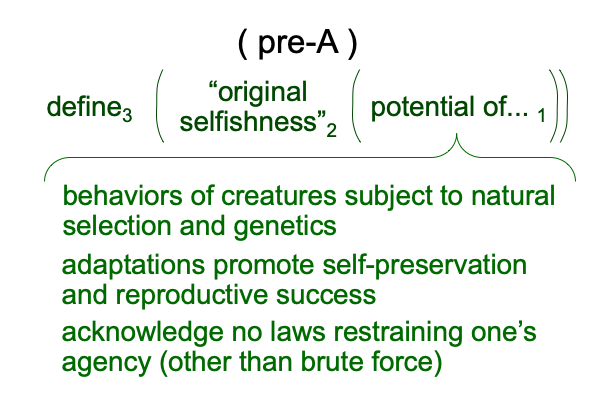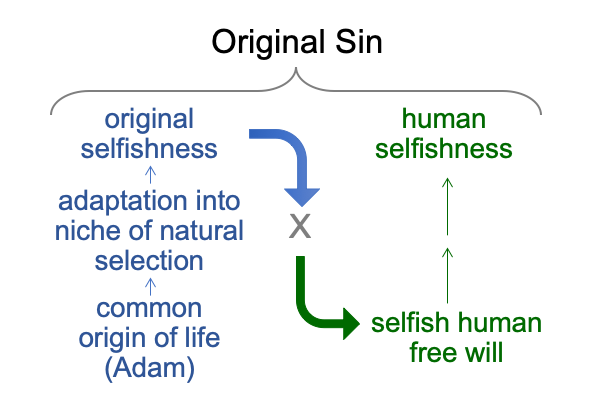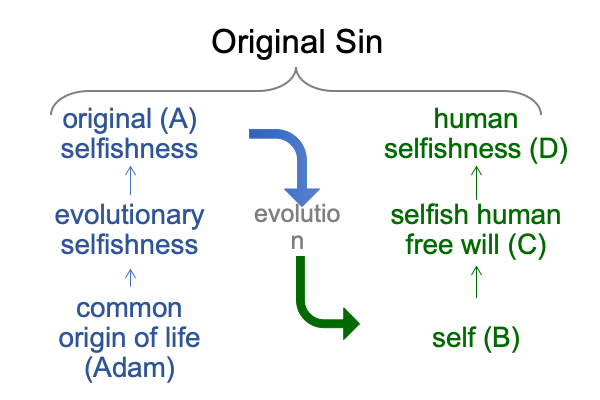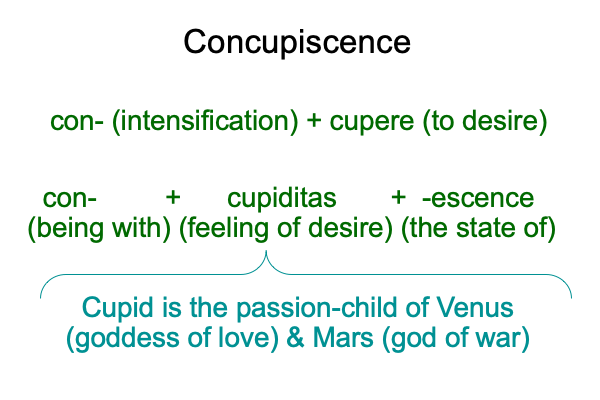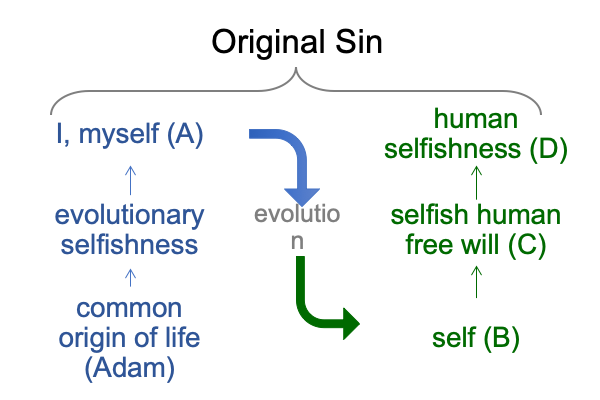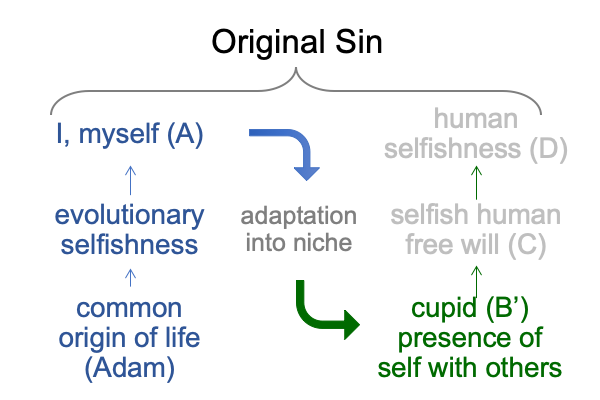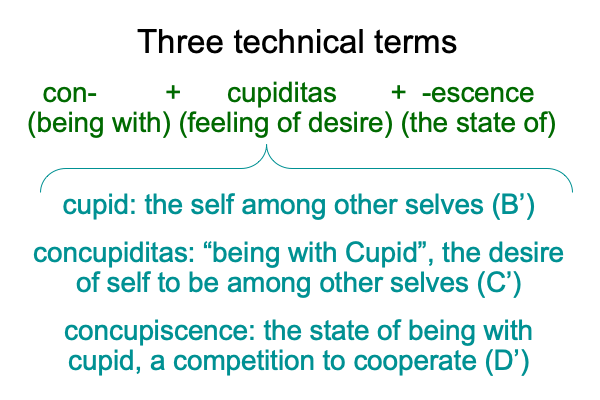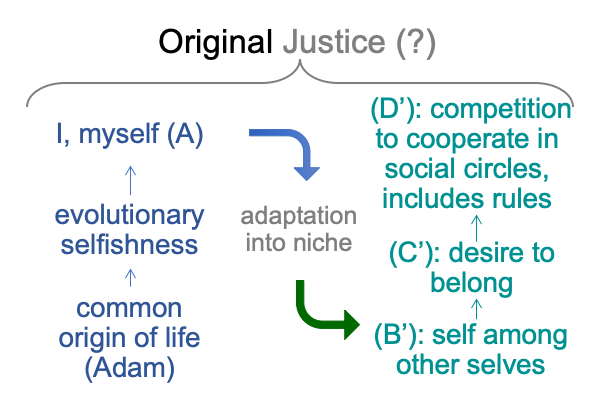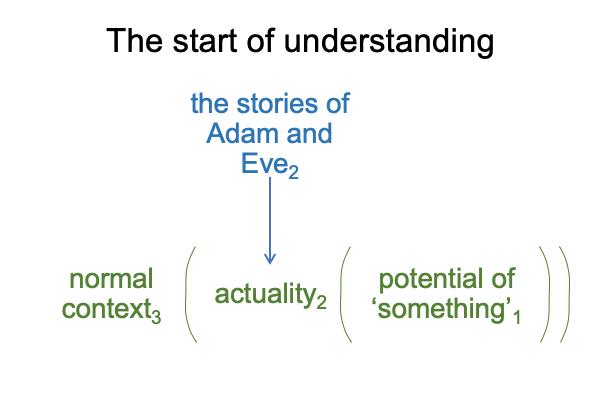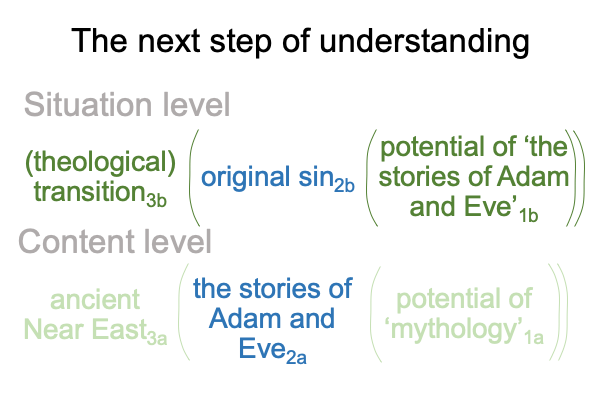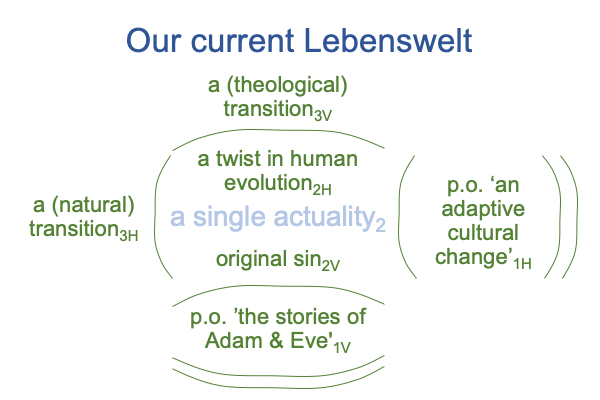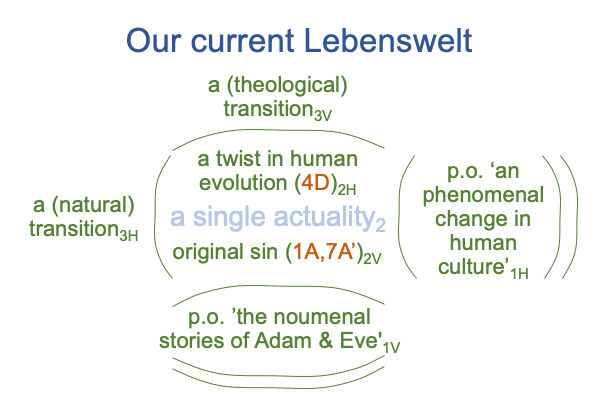Looking at Daryl Domning’s Book (2006) “Original Selfishness” (Part 1 of 16)
0001 Biologist Daryl P. Domning and theologian Monika K. Hellwig collaborate in a work, entitled, Original Selfishness: Original Sin and Evil in the Light of Evolution. Domning professionally studies the evolution of sirenians, sea cows, while maintaining an interest in Catholic theology. The sea cows, like the whales and the seals, are land mammals that adapted to an aquatic environment… or should I say?… niche.
0002 In terms of human imagination, sea cows associate to mermaids. Mermaids are chimeric. They are half woman and half fish.
0003 The titular word, “selfishness”, is chimeric as well. It starts in Germany as an emphatic, added to a pronoun (A). For example, I can say, “I myself” or “you yourself” or “he himself” or “she herself” and so on. Then, in Old English, the emphatic coalesces into a noun, “self” (B). Then, the noun becomes an adjective with an added,”-ish” (C). “Selfish” denotes an emphasis on self by self. Then, the adjective converts back into a noun with an added “-ness” (D). Selfishness (D) is the state of being selfish (C).
0004 So, there is an evolution to the word, “selfishness”, as well.
What games we play with words.
It makes me wonder whether the evolution of this spoken word has anything to do with evil in the light of evolution.
0005 If I change the mode of talk to hand-talk, I may say POINT TO MYSELF. I may not say I POINT TO MYSELF, because the pronoun, I, is signified by pointing to myself. I may gesture, POINT TO MYSELF twice, or with dramatic flair, but that is not equivalent to the spoken word, “self” (B) or “selfish” (C). It may be equivalent to the emphatic, “I, myself” (A).
0006 If language evolves in the milieu of hand talk, then our distant ancestors do not hand talk the equivalent of the spoken words, “self”, “selfish” or “selfishness”.
Does this fact provide a clue to original sin in light of evolution?
At least, it provides a clue to a divide in the course of human evolution.
The emphatic, I-myself (A), associates to hand talk and the Lebenswelt that we evolved in.
The explicit abstractions of self (B), selfish (C) and selfishness (D) associate to speech-alone talk and our current Lebenswelt.
0007 Our current Lebenswelt is not the same as the Lebenswelt that we evolved in.
In 2006 (and perhaps, anytime before Domning reads this), the author does not suspect that there may be a twist in human evolution. In general, evolutionary biologists have no idea. Like Domning, they are focused on genetics and natural history, not cultural turns. The hypothesis of the first singularity first appears in 2012 with the masterwork, An Archaeology of the Fall, available at smashwords and other e-book vendors.

